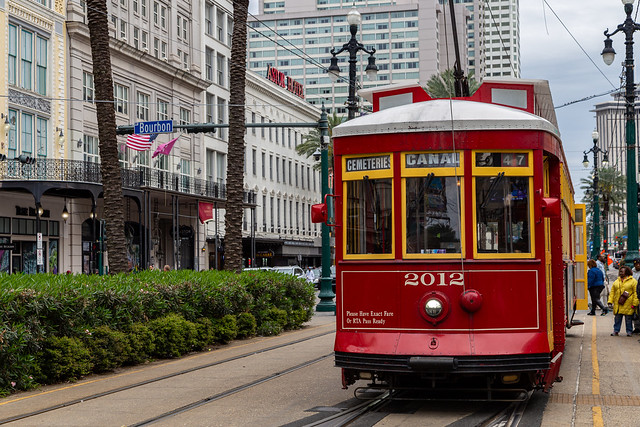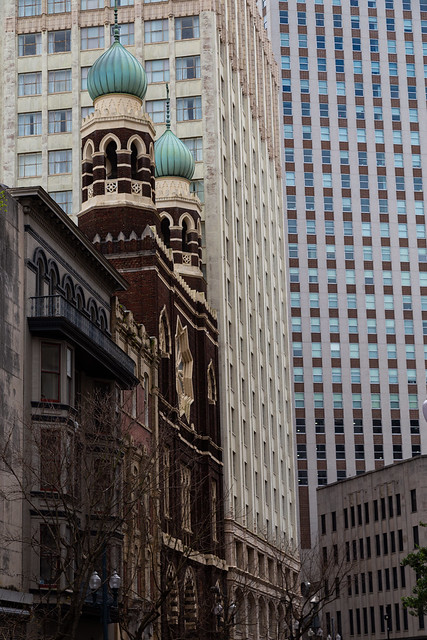
Along the way I passed by the Louisiana Supreme Court Building, which is a large and grand Beaux Arts-style courthouse that was built in 1910. It was built as a replacement to the Cabildo and Presbytère buildings as the seat of local justice in the city.

After the Louisiana Purchase, Canal Street became the dividing line that separated the French Creole who lived in the old Vieux Carré from the newer Americans who were moving into the city in droves. The street actually takes its name from a proposed canal that would have stretched from the Mississippi River to Lake Pontchartrain. The canal was never built, but the land that was set aside was turned into a wide street (171 feet) that now has room for six lanes of traffic and two streetcar lines.

Back in the olden days of New Orleans, there were some tensions between the old French Creoles and the new Americans. Canal Street became known as the "neutral ground," where both cultures could safely mix and mingle. In modern times, the term "neutral ground" now applies to all street medians in the city.

Canal Street quickly became the main shopping and entertainment district for the city. Canal Street was one of the first streets in the world to be completely lit by electric lights (joining places like London, New York and Paris). It's also believed that that the very first movie theater in the world (at least the "first business devoted specifically to showing films for profit") opened along Canal Street in 1896.

And along Canal Street you can also find the oldest continuously running street railway system in the world. The line first started operating in 1835 (back before Arkansas was even a state), and runs from Canal Street east through the Garden District, Uptown, Tulane, Audubon Park and ends in the Carrolton neighborhood. One discontinued streetcar line in New Orleans was the Desire Line. That line started out on Canal Street and then ran down Bourbon Street towards Desire Street in the Ninth Ward. There it moved over and then ran across Royal Street back to Canal Street. Although it was replaced by bus service, the line became famous thanks to the Tennessee Williams play (and later Oscar-winning movie) "A Streetcar Named Desire."

Just off of Canal Street, along Baronne Street, is the old Immaculate Conception Church. The Jesuit church was built in 1930. But it is a near duplicate of an older church that was built on the same site in 1850 that suffered foundation damage.

Nearby was this old sign for the Pearl Restaurant, which served diners for over 80 years but closed in 2015.

And one last shot, of a nearby restaurant that served another famous New Orleans delicacy.



No comments:
Post a Comment